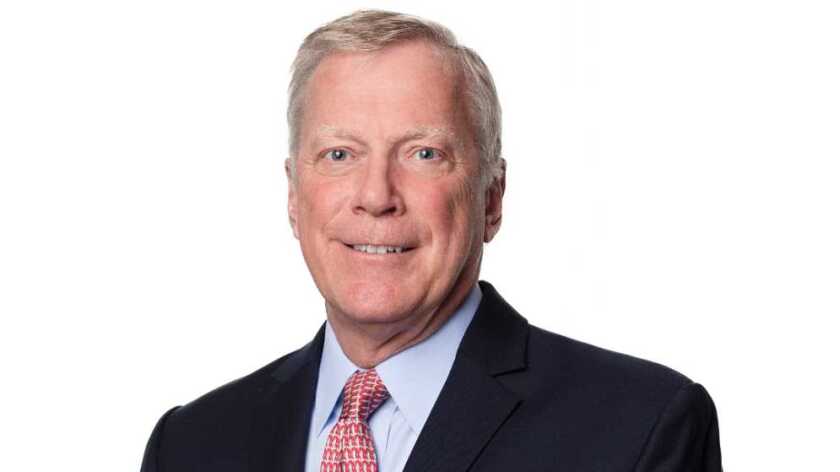Subsea carrier Global Cloud Xchange (GCX) has officially abandoned its plan to build a new 20Tbps cable from Europe to India and on to Singapore. Carl Grivner, who took over as CEO of GCX a year ago, tells me in this interview that “Eagle has flown the nest”.
He says: “We looked at the business case and it needed an anchor tenant.” But it didn’t have one. The previous management of GCX announced the plans for Eagle in 2017, initially to carry 100Gbps from Sicily eastwards to Asia. GCX was then part of Reliance Communications (RCom), the Indian telecoms company that, four years later, is still negotiating its way through Indian bankruptcy law.
RCom is unconnected with Reliance Jio, the successful Indian operator whose new 4G network, at low prices, has forced other operators – once there were 11 or more – into mergers or bankruptcy. Except there is a family connection: RCom, which filed for bankruptcy in 2019, was run by Anil Ambani; Reliance Jio is run by his brother, Mukesh Ambani. It’s probably the most expensive sibling rivalry in telecoms history.
RCom, which started life as Reliance Infocomm running a CDMA mobile network, expanded into other areas of telecoms. Notably, in 2003 it spent $207 million on Nasdaq-listed Flag Telecom, a 10Gbps subsea cable network, so-named because it was intended back in 1999 to be a Fibre-optic Link Around the Globe.
Flag initially had two sections – Flag Atlantic, from New York to the UK and France, and Flag Europe Asia, which continued the journey via the Mediterranean, the Middle East, India, China and Japan.
Anil Ambani added other operations to the RCom mix, including Vanco, a troubled UK-headquartered enterprise network company, for $77 million; and Yipes, an early Ethernet-based network bought from its venture capital owners for $300 million in 2007.
RCom later renamed the operation outside India as Reliance Globalcom, with Bill Barney in charge. Barney’s unit was renamed again, this time as Global Cloud Xchange, still part of RCom.
GTT bought Yipes’s customer base in 2016 for just $28 million. Vanco is still somewhere inside GCX.
For a time, Barney, based in Hong Kong rather than India, headed both RCom and its then-subsidiary, GCX. And that’s where the idea of a replacement for the 1990s-era Flag emerged. Flag was designed for 10Gbps; two decades later, GCX was considering 2,000 times that for Eagle.
One person in the industry – neither Grivner nor Barney – notes that some 15 years ago GCX was nurturing ideas for four new cables: Eagle, then planned to cross the Pacific; Hawk, from India to Europe; Peacock, for the Middle East; and Lion for Africa. “If those cables had been built as originally planned, then the subsea world and GCX would be in a very different place,” said this individual.
In June 2018, GCX completed work on IDC-5, its new Indian data centre, in preparation for the revised Eagle network, plans for which had been upgraded by then to 20Tbps with terminations in Marseille and Singapore, via Mumbai. More than a year later, in August 2019, Barney told me that the company had three quotes to build the cable, from “American, French and Japanese companies” – taken to mean SubCom, Alcatel Submarine Networks (ASN) and NEC, but Barney would not hint at or even confirm names.
But GCX was overtaken by events – and reality: in September 2019 it went into restructuring, separately from RCom, in a voluntary, pre-packaged Chapter 11 process. In November, just a few weeks later, it announced that it had emerged as a “standalone company, backed by the strong ownership of its senior secured noteholders”; it is now owned by its former lenders. Barney left GCX in March 2020. The new owners brought Grivner, formerly CEO of Colt, on to the board in April and he became CEO in July.
No anchor tenant
The big problem with Eagle, Grivner tells me from the US in this interview, was the failure to find an anchor tenant. The old adage of “build it and they will come” no longer works, he says. As an alternative, GCX might acquire capacity from other subsea operators on the route.
“We can swap capacity, or we can acquire half a fibre pair here or a fibre pair there,” he says. “There was nothing wrong with Eagle – just no anchor tenant. It’s an OTT [over-the-top] world and if you’re getting a consortium of wholesale carriers together you need an anchor tenant. I looked at the business case and it wasn’t working.”
GCX does have the ability to build something like Eagle for another company, he suggests.
Intriguingly, just days after my interview with Grivner, Digital 9, the investment company that bought Aqua Comms earlier this year, said it was planning to build Europe Middle-East India Connect 1 (EMIC-1), a new cable.
Nigel Bayliff, CEO of Aqua Comms, told me candidly that this plan is “almost exactly” what GCX called Eagle West. There is an anchor tenant for EMIC-1, though Bayliff would not name it, and there is a consortium of carriers, though he would not identify the members. No one involved in the EMIC-1 project has yet identified the landing stations, the route, or the capacity.
Software-defined GCX
But back to Grivner and GCX. The focus now is turning it into a software-defined network (SDN), he says, “as the world becomes more cloudified”. It’s essential that customers are able to “dial up and dial down” their services as their needs change. He has done it twice before: first at Pacnet, the Asian network he led until Telstra bought it for $697 million. In an interview Capacity did with Grivner in 2015, we said Pacnet was “one of the early trailblazers of SDN in Asia-Pacific”.
Grivner then travelled round the world back to London, where he had started his career in telecoms, to join Colt as executive VP in charge of network services, and began the process that has led to Colt IQ, its own brand of SDN. Months later he became CEO, a position he held until last year, when Keri Gilder took over.
Before you can have a good SDN you need the connections, he says. “Customers will be able to dial up 100Gbps links, data centre to data centre, from one cloud provider to another. But you have to have the physical assets.”
The first stage, already achieved, is to use the software so that GCX’s salespeople can give quotes to customers. “By March or April next year, customers will be able to do that themselves – at first on the terrestrial side, and then for subsea,” says Grivner. “You will be able to look at a 10G circuit from, say, London to Mumbai and get an instant quote. We can be competitive and sort things out so that our customers can be competitive.”
GCX has “a great set of assets”, he says, adding that the results for the year ending 31 March – Grivner’s first full year with the company – prove it. Published in early July, these show revenue up 6.6% year-on-year to $271 million. That was helped by cuts to total expenses of $36 million.
“GCX is once again on solid ground with an eye toward future growth,” said Grivner in his statement issued with the results. “Over the past year, our team has been focused on serving customers, bolstering technologies and solutions, and creating shareholder value. It’s a testament to the entire GCX team for their discipline, passion and commitment that enabled us to achieve these positive results.”
Reliance on Reliance
Back in the interview with Capacity, he goes a bit further. “The separation from Reliance has been great.” What went wrong with GCX? “The reliance on Reliance went wrong,” he puns. There is still a business relationship with RCom, but with GCX’s new owners Grivner is looking to the future.
What does that entail? Certainly, an opportunity for M&A, he suggests. There are big assets around, “and the big bang theory still marches on”, he smiles. “We have a great set of assets and there’s lots of industry benefit in having these great assets. There’s going to be a coming together.”
That almost sounds as if Grivner is marketing GCX’s assets to a possible purchaser. He doesn’t say.
Or, is he looking at other assets that are on the market – GTT’s infrastructure, for example? Again, he doesn’t say, though he notes that the former Hibernia Express, part of the infrastructure portfolio GTT is trying to sell to I Squared Capital (ISQ), also “has great assets”.
He insists: “I’m not in competition with ISQ. I can’t even speculate.” But “the demand for bandwidth is not slowing down”.
But there’s uncertainty, he sighs, especially because of the pandemic. “We are taking one day at a time. There’s a lack of customer confidence.” The industry has been through a torrid time since March 2020. “We have shown we can do it. We have shown we have a vision of where we can take GCX.”
And what are the long-term plans for GCX’s owners? “We have created options for our investors and we will continue to create options for our investors. It’s their money. We get to steward it. But it’s not a marriage. You are only as good as your last set of results.”










